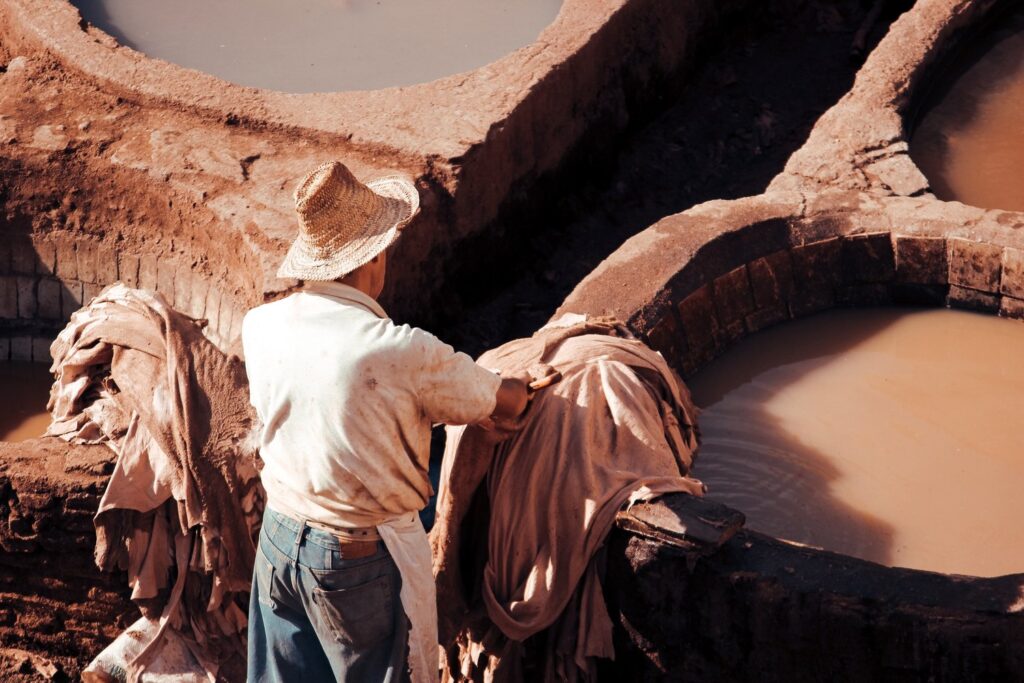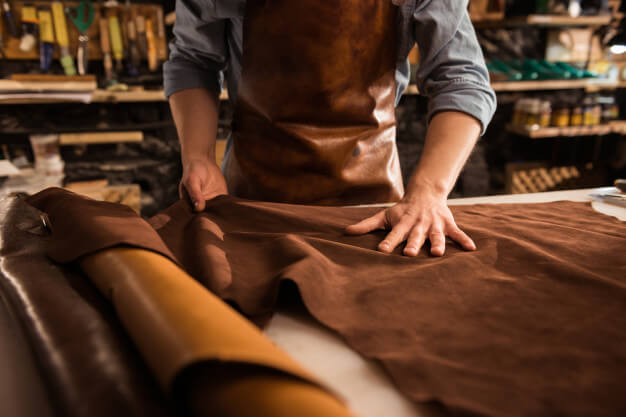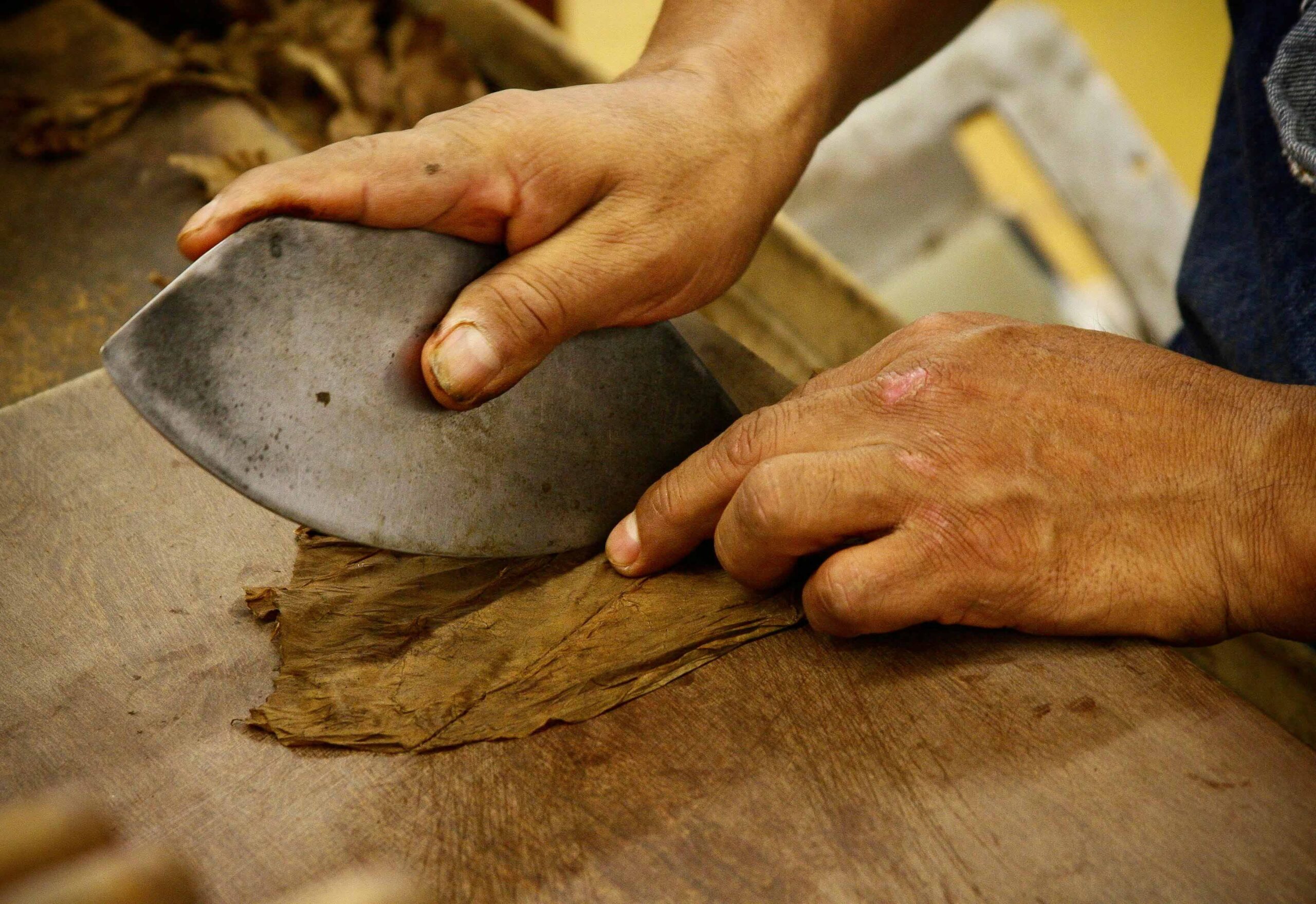Ah, leather – the OG of fashion! For centuries, this versatile material has been on the favorites’ list, but do you ever stop to think about the magical metamorphosis it undergoes from rugged animal hides to the sleek and artisanal leather accessories we all adore.
The enchanting realm of leather tanning is a concoction of science, tradition, and innovation. It’s a bit like alchemy, but with a dash of tannins and a sprinkle of chemistry! We’re about to embark on a journey through time, comparing the age-old, tried-and-true techniques with the shiny, modern, synthetic counterparts.
Whether you’re a leather aficionado, an artisan with a penchant for the craft, or just someone who likes things that look darn good, it;s time to, fasten your metaphorical seatbelt, because we’re about to unravel the mysteries behind leather tanning, from its impact on quality to its dance with sustainability.
The Basics of Leather Tanning
Leather tanning is the process of converting animal hides into leather, making them resistant to decay and flexible for various applications. The origins of tanning coincide with the advent of animal husbandry.
This marked a pivotal moment as rawhide became readily available, paving the way for the rudimentary forms of leather we know today. However, these early endeavors were modest in scale and simplicity compared to contemporary standards.
Around 3,000 BC, leather tanneries emerged in Sumeria (Iraq & Kuwait) and Mehrgarh (Pakistan), marking significant milestones in the art of tanning.
Natural Tanning
The Sumerians gained renown for their mastery of vegetable tanning, a method involving soaking hides in tannin-rich solutions derived from trees, bark, and fruits. Other techniques like alum and oil tanning, the latter involving the use of animal brains, were also prevalent among ancient cultures.
Natural tanning methods primarily use tannins, which are organic compounds found in various plant materials. Common sources of tannins include oak, chestnut, hemlock, and quebracho trees, as well as natural substances like acorns, leaves, and barks.

The Traditional Art of Natural Tanning
- Vegetable Tanning: One of the oldest methods, vegetable tanning utilizes plant extracts, such as bark and leaves, to tan hides. This process is celebrated for its eco-friendliness, and produces a distinctive, earthy scent in the finished leather.

- Bark Tanning: Historically, oak and hemlock barks were favored for their high tannin content. The process involves soaking hides in a solution of crushed bark and water, a practice that dates back centuries.
- Oil Tanning: This method involves treating hides with natural oils, fats, and waxes, resulting in soft, pliable leather. Fish oil, for instance, has been used for centuries in this process.

Significant technological advancements, expanded international trade, and early signs of capitalism, boosted the demand for leather goods. This, in turn, led to the development of leather tanning in terms of chemical tannins, and the machinery used.
Synthetic Tanning
- Chrome Tanning: The tanning landscape underwent a revolution with the invention of chrome tanning in 1858. This method replaced natural tannins with a blend of chemicals, acids, and salts, notably chromium sulphate, drastically reducing the tanning process from months to a single day. This breakthrough played a pivotal role in meeting the surging demand for leather products during the Industrial Revolution in supplying belts for machinery and military equipment.

- Aldehyde Tanning: This method involves using aldehydes, such as formaldehyde, to tan hides. Aldehyde tanning yields leather with exceptional water resistance and is commonly used in glove manufacturing.
- Synthetic Tanning Agents: Today, synthetic tanning agents like syntans and phenolics are used to supplement natural tanning processes. They offer greater control over factors like color and texture, allowing for highly customizable leather production.
Alternative tanning methods, collectively known as ‘Chrome-Free’, are typically tailored to meet specific performance needs, particularly in automotive applications. The prevalent approach is aldehyde tanning, employing glutaraldehyde. Leathers treated with this agent necessitate additional chemical treatments post-tanning to enhance their properties. Consequently, the effluent from the chrome-free process demands supplementary treatment prior to discharge.
Comparing Natural and Synthetic Tanning
- Sustainability: Natural tanning is generally considered more environmentally friendly, as it relies on renewable resources like plants and trees. It creates biodegradable waste, unlike synthetic tanning, which can produce hazardous waste if not managed properly.
- Quality: Natural tanning often results in leather with a unique character, developing a rich patina over time. It is favored by artisans and purists for its ability to age beautifully. In contrast, synthetic tanning provides consistent, uniform results but may lack the same depth of character.
- Speed: Synthetic tanning processes are faster, making them a cost-effective choice for large-scale production. Natural tanning is a slower, more labor-intensive process, making it suitable for smaller, artisanal batches.
- Application: The choice between natural and synthetic tanning often depends on the intended use of the leather. Natural tanning is preferred for products that demand character and longevity, while synthetic tanning suits items that require consistency and rapid production.
In the world of leather tanning, tradition and innovation coexist, each offering distinct advantages. While traditional methods celebrate natural, time-honored processes, modern synthetic tanning agents exemplify efficiency and scalability.

Ultimately, the choice between natural and synthetic tanning methods depends on the intended use, environmental considerations, and aesthetic preferences. By understanding the science behind these processes, consumers like you, and even artisans can make informed decisions, ensuring that their leather products align with their values and expectations.
For further insights into the world of leather craftsmanship, feel free to explore our collection of handcrafted leather goods.



Nice